Families, concerned community members and organizers from across Long Island, New York City and New Jersey gathered the evening of Oct. 1 in Riverhead, N.Y., for the People’s Vigil to remember all of the lives lost to the opioid epidemic.
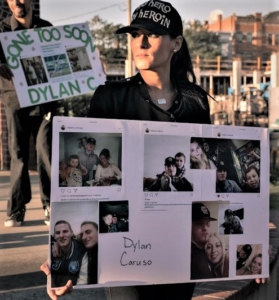 Standing in a semicircle, the crowd supported one another as dozens of speakers poured fourth heart-wrenching testimony of overdose, loss, recovery and survival. This was one community’s effort to intervene in a public health crisis that claimed the lives of 66,000 Americans last year. To give a sense of just how big this crisis is, at the height of the AIDS crisis in 1994, 50,000 people died.
Standing in a semicircle, the crowd supported one another as dozens of speakers poured fourth heart-wrenching testimony of overdose, loss, recovery and survival. This was one community’s effort to intervene in a public health crisis that claimed the lives of 66,000 Americans last year. To give a sense of just how big this crisis is, at the height of the AIDS crisis in 1994, 50,000 people died.
In unity, there is strength
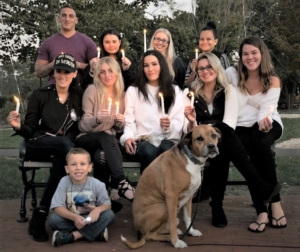 Voice after voice offered chilling testimonies of the toll drugs took on their lives. Brave participants from all walks of life, representing towns and neighborhoods spread across New York and New Jersey, volunteered their pain and their stories. Speakers came from the most oppressed sections of the Bronx, Staten Island, the Lower East Side and Paterson while others were from the poor rural suburbs of Hempstead, Roosevelt and Islip. Hearing them on the same platform reiterated the fact that every part of the working class is fighting against this plague.
Voice after voice offered chilling testimonies of the toll drugs took on their lives. Brave participants from all walks of life, representing towns and neighborhoods spread across New York and New Jersey, volunteered their pain and their stories. Speakers came from the most oppressed sections of the Bronx, Staten Island, the Lower East Side and Paterson while others were from the poor rural suburbs of Hempstead, Roosevelt and Islip. Hearing them on the same platform reiterated the fact that every part of the working class is fighting against this plague.
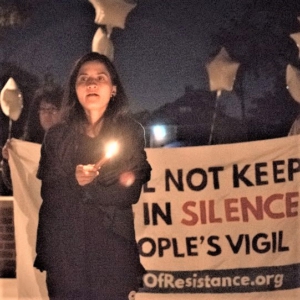 Laura Caruso spoke about the loss of her 24-year-old son, local baseball star Dylan, this past June and the indescribable absence that she and her family felt. She remembered Dylan for “his big heart and willingness to always help others in need.” Dylan’s girlfriend Kellyanne read a letter evoking the memory of a young man whose whole life was ahead of him.
Laura Caruso spoke about the loss of her 24-year-old son, local baseball star Dylan, this past June and the indescribable absence that she and her family felt. She remembered Dylan for “his big heart and willingness to always help others in need.” Dylan’s girlfriend Kellyanne read a letter evoking the memory of a young man whose whole life was ahead of him.
Registered Nurse Joyce Chediac urged people to look deeper into why this epidemic afflicts our communities. Evoking the memory of her brother Tommy, her voice beamed out into the night: “Our loved ones were not their illness. Let us reclaim their dignity as human beings.” She called on family members there to “reclaim our own dignity, and all that we need to keep our dignity, including holding the government accountable for getting drugs out of our communities, and our right to a decent job.”
A circle of pain and healing
A young Filipina and a young Colombian woman remembered their own mothers and their bouts with addiction. Forgiving but never forgetting, they regretted not having had the opportunity to spend time with their mothers and understand their battles.
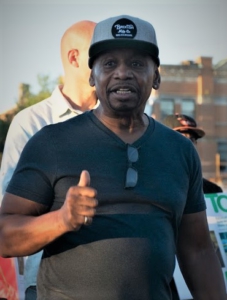 Recovering addicts offered educational testimonies of what they had endured and overcome to get here today. We heard of people with untreated mental illness self-medicating with street drugs, of people who became addicted when their pain was not well managed by professionals, of people whose communities were so flooded with illegal drugs that it was on their doorsteps and of people who could not get jobs and turned to drugs or drug dealing.
Recovering addicts offered educational testimonies of what they had endured and overcome to get here today. We heard of people with untreated mental illness self-medicating with street drugs, of people who became addicted when their pain was not well managed by professionals, of people whose communities were so flooded with illegal drugs that it was on their doorsteps and of people who could not get jobs and turned to drugs or drug dealing.
Two women remembered Elizabeth “Liz” Stenson as one of the hardest, most intimidating and most loving women to walk the streets of Amityville. These women felt that the Suffolk Country prison system murdered Liz last year when it intentionally deprived Stenson of her blood pressure medication.
A 27-year-old recovering addict who worked as a waiter in Westchester County cautioned against judging addicts, reminding us: “We don’t know everyone’s story. Most often, it is a personal and family history of trauma, poverty, neglect and violence that leads to the need to numb.”
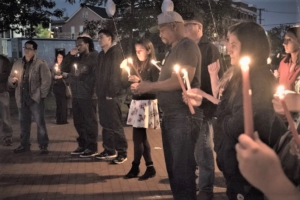 Several mourners connected the drug plague here to the U.S. presence in Afghanistan, as opium production there has increased there since the U.S. occupation began in 2001.
Several mourners connected the drug plague here to the U.S. presence in Afghanistan, as opium production there has increased there since the U.S. occupation began in 2001.
Many spoke to the fact that drug addiction was an illness, yet people suffering from it were stigmatized and often jailed, not treated.
A 23-year-old woman pointed out that if this was another kind of epidemic the government would be obliged to wipe out the source. She asked, “Why isn’t there a serious government effort to get drugs out of working-class communities?”
The testimony went on for two hours. Even those who came mostly to give support, after hearing others speak, themselves took the floor to recount yet another facet of the drug epidemic by telling of the experiences of their parents, siblings, cousins, aunts, uncles and friends.
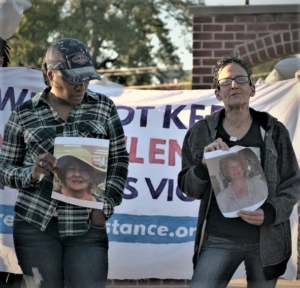 Organizers held up a banner which read “The People’s Vigil: We will not keep dying in silence.” As the community speak-out showed, no family is alone in their battle against addiction.
Organizers held up a banner which read “The People’s Vigil: We will not keep dying in silence.” As the community speak-out showed, no family is alone in their battle against addiction.
Despite organizer’s attempts to contact the mainstream media, only one local news outlet briefly passed by the vigil.
Sixty-six thousand and counting
The Department of Health reported that 1,374 people died from overdoses across the New York City last year—a 46 percent increase from 2015. Fentanyl was found in 44 percent of those cases. Fentanyl is a synthetic drug used to treat pain during and after surgery. Low-level dealers can increase their profits by spiking heroin with small doses of fentanyl to boost the impact of the hit. As our generation is witnessing, this has deadly consequences.
The fastest growing population of addicts with lethal overdoses are those who start taking “legal” pain pills but graduate on to “street drugs” when they can no longer fill their prescriptions. Many speakers were quick to point out that pharmaceutical companies were trading and cashing in on human life. On average, the medical industry issues 300 million prescriptions for opioid-based pain killers per year in the U.S., a $24 billion industry. There can be no doubt that mega pharmaceutical corporations and their counterparts in the mainstream media have no genuine interest in confronting this plague. Their concern is not our lives; it is their own profits
Confronting the epidemic
Long Island is but one epicenter of what the Black Panther Party called “the plague.” Organizers from the People’s Congress of Resistance and Redneck Revolt hope to replicate the model of People’s Vigils in Cleveland, Ohio; Madison, Wisc.; Honolulu, Hawaii; Brockton, Mass., and wherever else poverty, unemployment and addiction ravage our communities.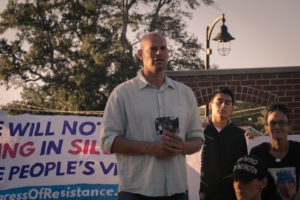
Although we can never recover the lives lost, if we stand united and proactive we can intervene to prevent lethal overdoses in the future. ACT UP organizer Larry Kramer, speaking on the AIDS crisis, said, “Until we get our acts together, all of us, we are as good as dead.”
If we remain in silence, our loved ones will continue to fall by the wayside. Only we can put a halt to this epidemic and ensure that our children do not have to endure the social and personal trauma that we have.






